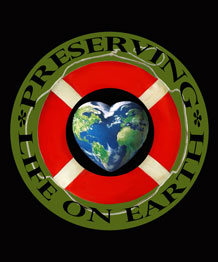Chaparral
FYA: For Your Awareness
Chaparral is a word derived from the Spanish word el chaparro, which refers to a thicket or evergreen scrub oak. The chaparral is a coastal temperate biome that occupies less than 5% of the earth’s surface, but is home to approximately 48,250 known vascular plant species making up about 20% of the world’s total.
What is a Chaparral?
Chaparral is a type of scrubland that contains fire-adapted, summer drought-tolerant evergreen shrubs that exist on nutrient-poor rocky soils and are shaped by factors such as a Mediterranean climate (mild, wet winters and hot dry summers) and wildfires.
Even though there are several different types of chaparral species, all certainly have a very thick (nearly impenetrable) shrub layer with a thinly dispersed understory of grasses and other herbaceous plants.
Shrubs and low growing vegetation are plentiful. The trees that grow in the chaparral often have small wax coated leaves to prevent evaporation of water or needle shaped leaves to pull water from the air. Many trees in this biome contain heavy bark that protects them from fire. However, shrubs and scrub in this region tend to burn very quickly. Some trees have leaves that burn rapidly and allow fires to spread quickly. There are even species that require the fires to reproduce. Plants can include rosemary, thyme, oregano, sage, poison oak, scrub oak, yucca wiple, and cacti. Other trees include evergreen, olive and fruit trees, eucalyptus and cork oak.
Annual rainfall is typically 10-17 inches. Summer can last up to 5 months with temperatures reaching 100 degrees. Winter temperatures can fall to 30 degrees. Chaparral biomes often border deserts, so there is a similarity in plants found in both. Animals include coyotes, mule deer, reptiles and lizards, praying mantis, and ladybugs. Animals tend to be nocturnal. Due to the length of summer, chaparral can experience drought and are susceptible to forest fires.
Where is the Chaparral located?
Chaparral occurs in the “maquis” (=chaparral) of the Mediterranean Region in the world’s five Mediterranean climate zones, which are located 30 degrees north & south of the equator on the western edge of the continents. The largest area of chaparral is located around the Mediterranean Sea, however similar ecosystems are found elsewhere in the world including: Western United States (primarily California from Baja to southern Oregon), Central Chile, Southwestern Australia, and the Southwestern tip (Cape of Province) of South Africa.
Did you know that the Chaparral is the largest vegetation type in California covering approximately 8.6 million acres (or 1/20 of the state)?
Why is the Chaparral important to protect?
The chaparral is important to protect because it provides erosion protection, allows underground water resources to recharge, serves as a habitat for plants and animals, and provides recreation opportunities. Chapparal landscapes allow for the enjoyment of being in nature for hiking, camping, biking, and horseback riding.
When is the Chaparral under threat?
The chaparral is being threatened primarily by humans: land development, pollution, fire, invasion of non-native species, and public misconceptions about its’ value. Chaparral has a rugged beauty which is why land development is encroaching on chaparral in areas such as Los Angeles and San Francisco. The pollution that is a by product of land development is detrimental to animals and plants. When humans invade what has been a habitat for animals it causes a shaky balance between humans and animals. Humans are threatened when animals hunt on their property, yet the animals have lived here much longer. Fires can be good and bad; some species need fire to reproduce. However, it takes 10-15 years for plants and trees to recover from fire and regenerate. If during that time the area is overrun with weeds and non-native plants, it can be difficult for the chaparral to recover. Clearing and burning to prevent fires can also jeopardize this natural environment and allows non-native species to invade the landscape. When people view the chaparral as a wasteland of little value, they see is no reason for preservation.
Who is protecting and preserving the Chaparral?
The Chaparral Institute protects native shrubland habitats worldwide through education and preservation.
Chaparral Land Conservancy helps to protect California’s native landscape through preservation and stewardship.
World Wildlife Federation has programs to protect and preserve Chaparral; one of their projects is the preservation of the California montane chaparral and woodlands of Southern California.
How can we protect the Chaparral?
You can preserve and protect the chaparral in several ways: if you live in a chaparral region, protect your house against fire, by clearing weeds and brush around your home; when in nature be careful not to start a fire; while camping ensure that your fire is completely extinguished; and donate to organizations that protect the chaparral. Finally, you can investigate local opportunities to volunteer or provide education in support of preserving chaparral. By spending time in the chaparral it will provide an appreciation of why it is important to protect.


